
| Version | Summary | Created by | Modification | Content Size | Created at | Operation |
|---|---|---|---|---|---|---|
| 1 | Camila Xu | -- | 1512 | 2022-11-24 01:48:44 |
Video Upload Options
A takht, or taḵẖata (Punjabi: ਤਖ਼ਤ) literally means a throne or seat of authority and is a spiritual and temporal centre of Sikhism. There are five Takhts, which are five gurudwaras that have a very special significance for the Sikh community. The first and the most important was established by Guru Hargobind in 1609, 'Akal Takht' (the Throne of the Timeless God) and is just opposite the gate of Harmandir Sahib – The Golden Temple, Amritsar. While the Harmandir Sahib, or Golden Temple, represents Sikh spiritual guidance, the Akal Takht symbolizes the dispensing of justice and temporal activity. It is the highest seat of temporal authority of the Khalsa and the seat of the Sikh religion's earthly authority. There, the Guru held his court and decided matters of military strategy and political policy. Later on, the Sikh Nation (Sarbat Khalsa) took decisions here on matters of peace and war and settled disputes between the various Sikh groups. The Sarangi singers sung the ballads of the Sikh Gurus and warriors at the place and robes of honour (saropas) were awarded to persons who rendered distinguished services of the community of men in general. In December 2010, the Deccan Odyssey train, taken on charter from Government of Maharashtra, started with the aim to have a journey across four Sikh takhts, with a flight by devout and sightseers to the fifth takht (Takht Sri Patna Sahib). A special train named Panj Takht Special train for the pilgrimage of five Sikh takhts, was flagged off on 16 February 2014.
1. Akal Takht Sahib
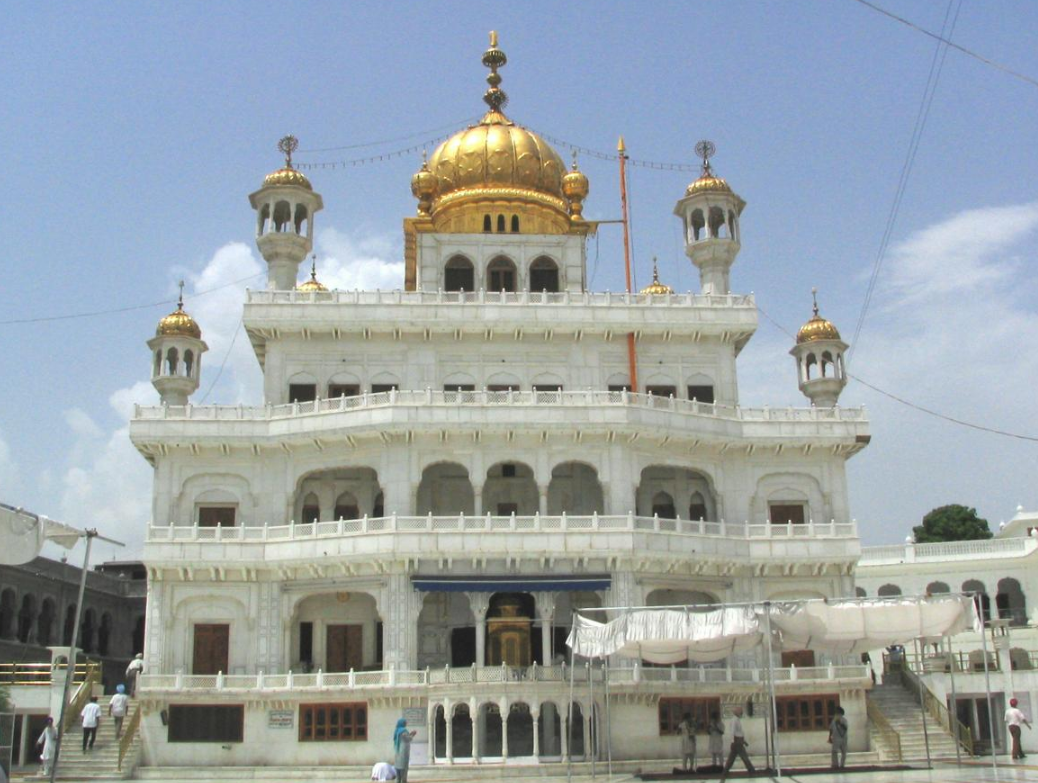
Akal Takhat Sahib means Eternal Throne. It is also part of the Golden Temple complex in Amritsar. Its foundation was laid by Guru Hargobind Ji, the sixth Sikh Guru. The Akal Takhat is situated opposite to Harmandir Sahib and is connected by a passage. The building of the Akal Takht opposite the Golden Temple has a special meaning. While the Golden Temple stands for spiritual guidance the Akal Takhat symbolizes the dispensing of justice and temporal activity. In earlier days all Sikh warriors sought blessings here before going to battle fields. During the 18th century while Sikhs were fighting a guerrilla war in the forests they used to gather at the Akal Takht on special occasions such as Vaisakhi. Here the community used to have general meetings and approve resolutions. The Akal Takht is the oldest of the Five Takhats.
2. Takht Sri Keshgarh Sahib
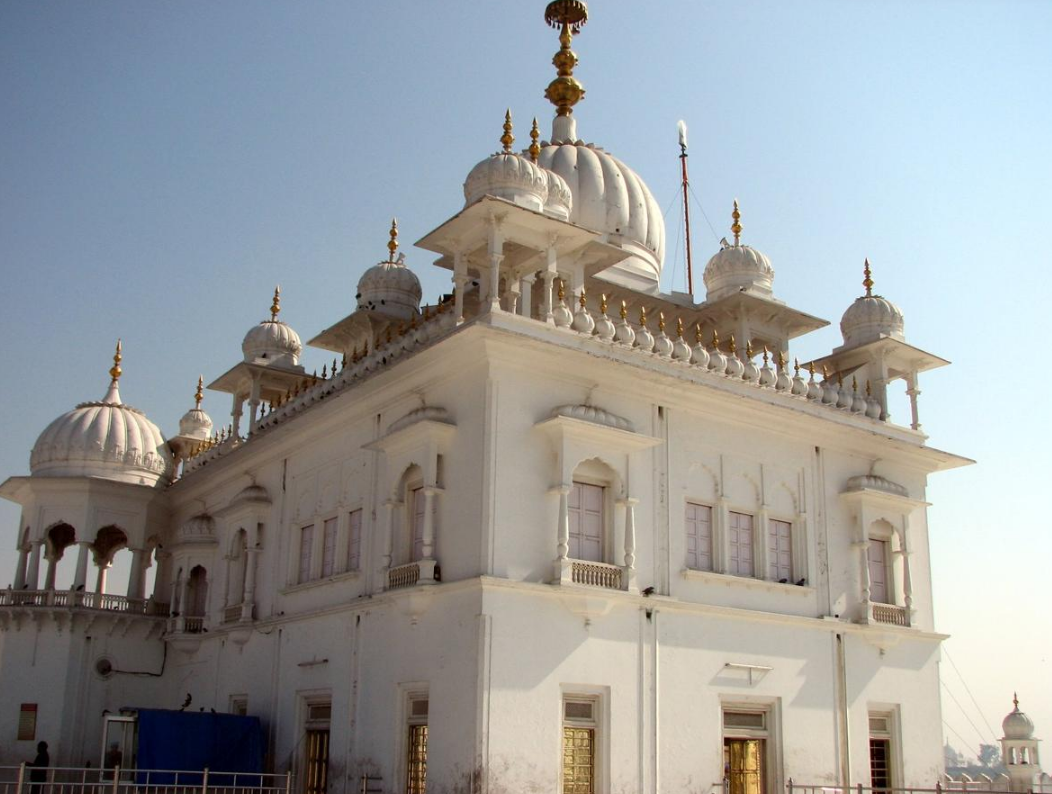
Takht Sri Keshgarh Sahib is situated at Anandpur Sahib. It is the birthplace of the Khalsa, which was founded here by Guru Gobind Singh in 1699. Some of the weapons of Guru Gobind Singh Ji are displayed here.
3. Takht Sri Damdama Sahib
Takht Sri Damdama Sahib (Talwandi Sabo) is situated in the village of Talwandi Sabo near Bathinda. Guru Gobind Singh stayed here for about a year and compiled the final edition of Guru Granth Sahib also known as the Damdama Sahib Bir in 1705.
4. Takht Sri Patna Sahib
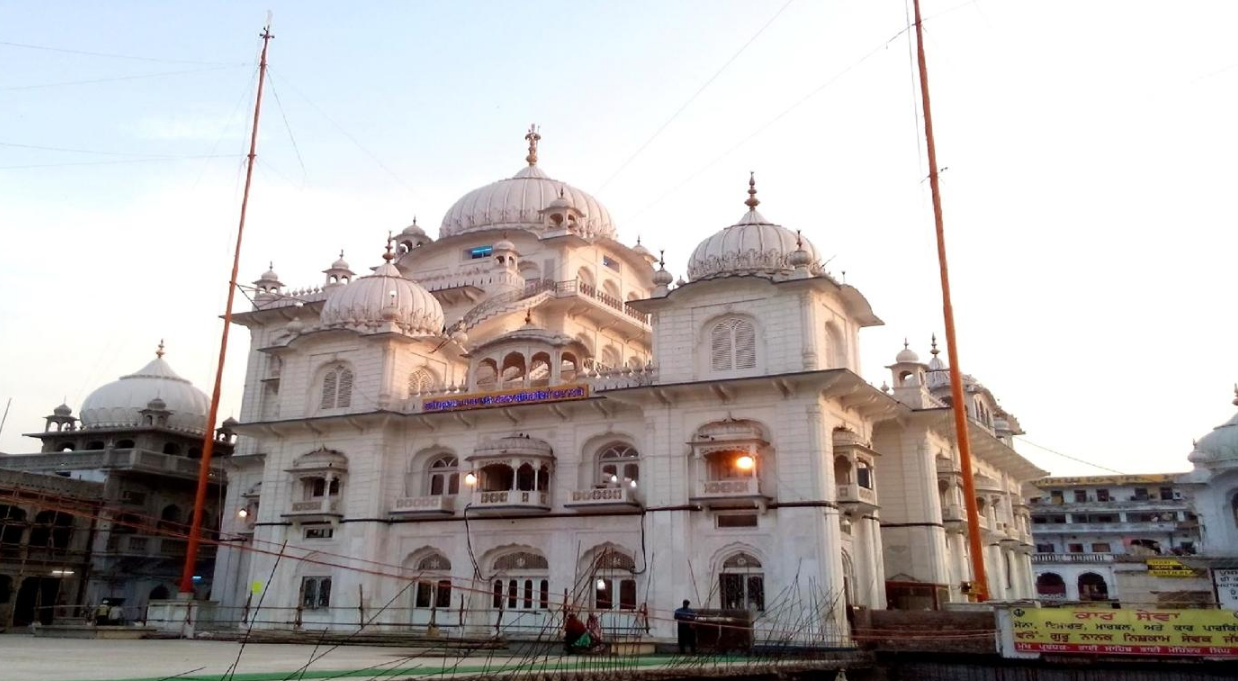
Takht Sri Patna Sahib is situated in Patna city which is also the capital of Bihar state. Guru Gobind Singh Ji was born here in 1666 and He spent his early childhood here before moving to Anandpur Sahib.[1][2] Besides being the birthplace of Guru Gobind Singh Ji,[3] Patna was also visited by Guru Nanak Dev Sahib Ji and Guru Tegh Bahadur Sahib Ji at different points of time. Here also stayed Guru Gobind Singh Ji's mother who is Mata Gujri Ji. In the house of salis rai jaohri.
5. Takht Sri Hazur Sahib
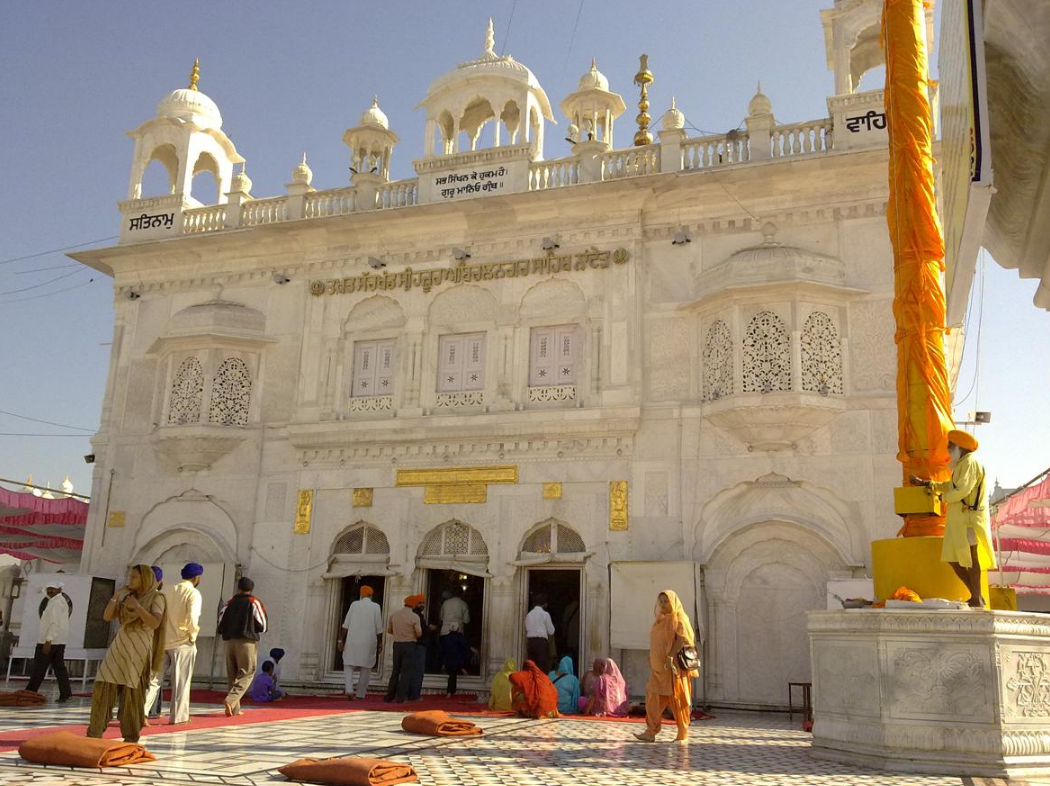
Nanded is one of the historical places in Marathwada region of Maharashtra State. It is situated on the north bank of Godavari River, in the southeastern part of Maharashtra, bordering Telangana. It is famous for Sikh Gurudwaras and is a town of great antiquity. In 1708, Guru Gobind Singh Ji (the tenth spiritual leader of the Sikhs) came to Nanded, His permanent abode. It was He who preached amongst the Sikhs that there need not be any Human Guru for them after Him and they should take Guru Granth Sahib Ji as their living Guru and there will be no difference between Him and the Guru Granth Sahib Ji. A monument has been constructed at the place where Guru Gobind Singh Ji left his body to merge with the omnipresent, known as the Angitha Sahib (funeral pyre). The Takht has been constructed around the Angitha Sahib, and is collectively known as Thakt Sachkand Sri Hazoor Sri Abchal Nagar Sahib.
6. Takht Sri Budha Dal 96 Krori Nihang Fauj (Contested)
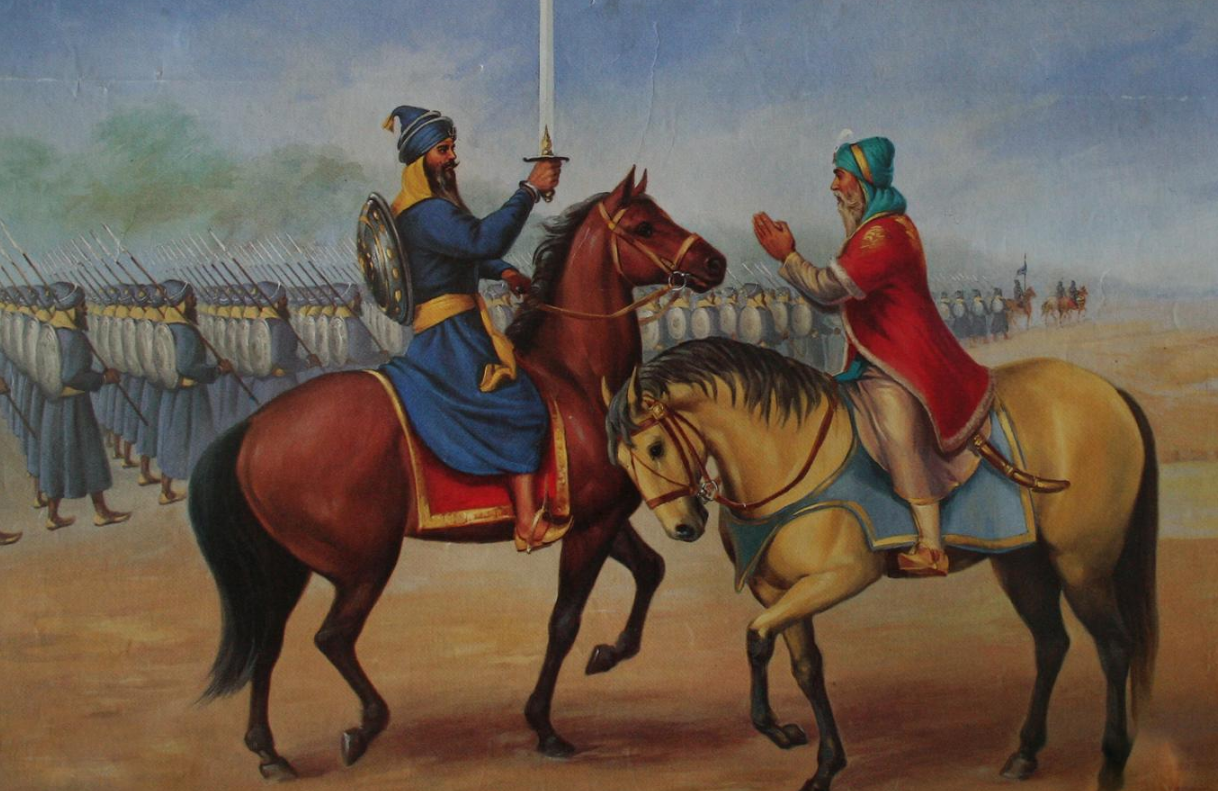
Budha Dal is said to be the "Ladlian Faujan" of Guru Gobind Singh Ji. Originally, Budhadal is said to be the 5th and the final takhat. However, as mentioned earlier that SGPC is now the governing body and all the major religious properties are under their control. They are forcefully changing the history, by alleging that Damdama Sahib is the fifth takhat. Which is historically not true. This was made by politics as the Guru ji ki ladli fauj disagreed with SGPC and the Damdami Taksal agreed with their view.
The Nihangs differ essentially from all other Sikh orders in being a militaristic organisation. The Nihangs wear chequered dresses of a particular shade of blue known as "electric-blue".bangles or bracelets of steel round their wrists (Kara), and quoits of steel (Chakra) in their lofty conical blue turbans, together with daggers, knives and swords of varying sizes (Kirpan), and an iron chain. They are nomadic and carry many traditional and modern weapons. Today, Nihangs foregather in their hundreds at Anandpur, on the occasion of the festival of Hola Mohalla and display their martial skills. This tradition has been in place since the time of Guru Gobind Singh and continues till today.
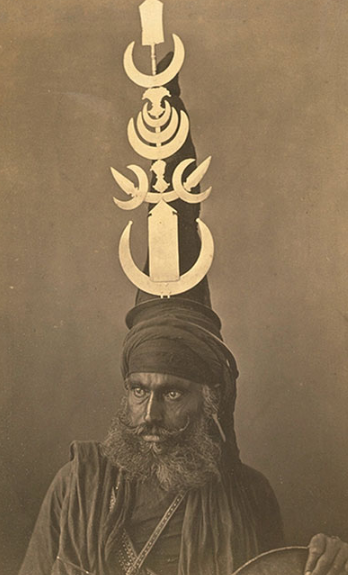
The Nihangs have historically emphasized the color blue and early travellers noticed this distinction between the larger Sikh community and the Nihang sect when it came to their attitudes regarding color. They carry the original beliefs and traditions of the Khalsa.
They do not tie on their heads red turbans from the dye of safflower. Most of them put on blue turbans. The wearing of kachhha (short breeches) is very common in this community. They are divided into two named groups. The first, comprising those who put on blue attire which Guru Gobind Singh used to wear at the time of battle, are designated Akali Sikhs (Sikh Akalia); the second, simply called Sikhs, do not follow any restriction on the colour of their dress.
Tashrihu ‘I Aqwam, James Skinner, 1825,
“Blue clothing has been ordained in the Rehat of Sri Guru Gobind Singh Ji. At the time the Akali Panth was created the colour blue was chosen. Our Nishan Sahib are blue, I do not know why this tradition of Kesari Nishan Sahibs has come about. We are the Panth of Akaal Purakh (Timeless Being) and blue is the colour we have been decorated with by the Guru. For this reason where there is an encampment of Nihang Singhs a blue battle standard stands high, this is the symbol of our panth. So Nihang Singhs are the Akali Singhs, this is the panth of the Guru and this is the uniform of the panth not the Hindu Kesari.”
Jathedar Baba Santa Singh, Audio Recording May 1996[4]
They also carry the original Sikh Emblem of the Aad Chand. There are two major variations of the Aad Chand worn by Nihangs. The more common one features a crescent moon symbol with a khanda sword at its center and decorative elements below the crescent. The other less common variation featuring three bladed weapons (two curved swords on either side of a central khanda sword) all within the crescent moon. This second variation is called a Gajgah and is traditionally worn by Nihang warriors who have proven themselves on the battle ground.[5]
7. Gurudwara Janamasthan Nankana Sahib (Potential)
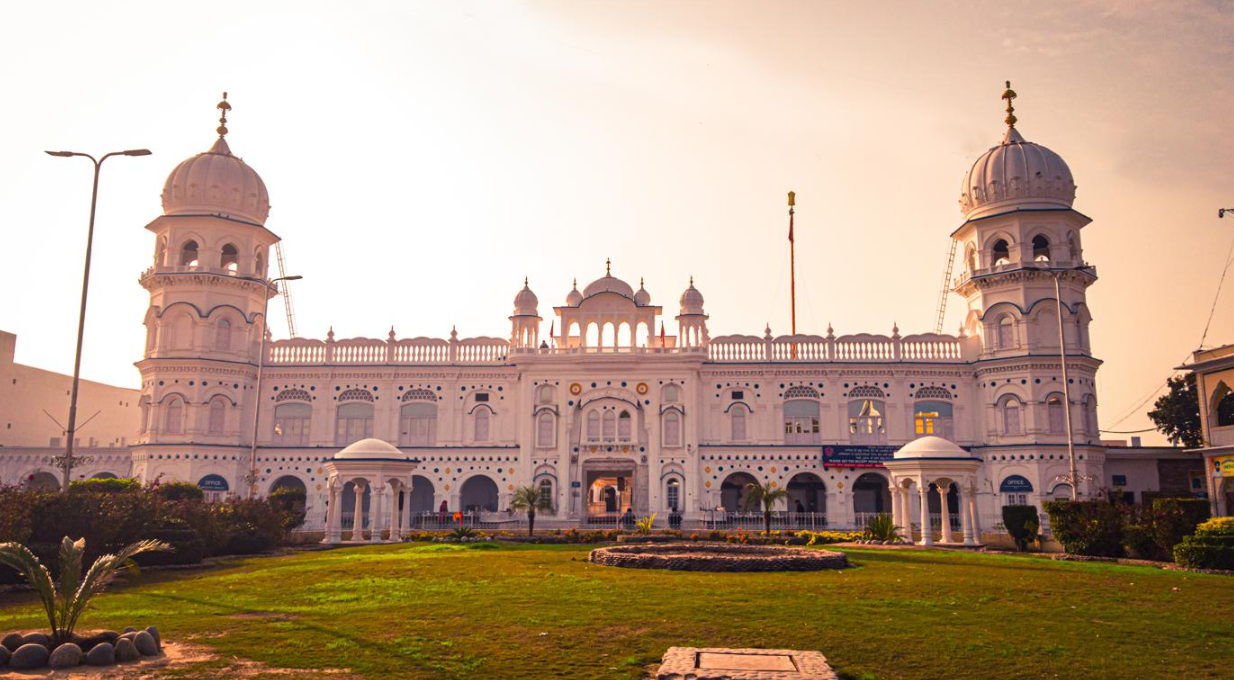
A proposal for a sixth Sikh takht at Guru Nanak Dev’s birth place in Nankana Sahib in Pakistan has sparked a debate in the Sikh community, and among historians and scholars.[6]
Shiromani Akali Dal (Delhi) president and former president of Delhi Sikh Gurdwara Management Committee (DSMGC) Paramjit Singh Sarna has stirred a controversy by demanding that Gurdwara Janamasthan Nankana Sahib in Pakistan be declared the sixth takht (seat of authority) of Sikhs. Acting jathedar of Akal Takht, Giani Harpreet Singh was the first to censure the demand, saying: “This is a baseless demand which belittles the concept of Panch Pardhani (significance of five) in Sikhism like five articles of faith, five beloved ones (Panj Payaras) and five bania.” The proposal was ignored afterwards.
References
- Mona Mehta. "The tenth Guru was born here". http://timesofindia.indiatimes.com/life-style/The-tenth-Guru-was-born-here/articleshow/11336445.cms.
- "Five jathedars visit Patna, kick off ’17 preparations | Patna News - Times of India". https://timesofindia.indiatimes.com/city/patna/Five-jathedars-visit-Patna-kick-off-17-preparations/articleshow/48137108.cms.
- "Takhat Saheb set for prakashotsav | Patna News - Times of India". https://timesofindia.indiatimes.com/city/patna/Takhat-Saheb-set-for-prakashotsav/articleshow/28354831.cms.
- "Nishan Sahib Khanda Sikh Symbols Sikh Museum History Heritage Sikhs". http://www.sikhmuseum.com/nishan/mistaken/crescent.html.
- Dusenbery, Verne A. (2020-10-01). "From ‘overseas Sikhs’ to ‘the Sikh diaspora’ to ‘global Sikhs’: Retrospect and prospects in the study of Sikhs beyond the subcontinent". Sikh Formations 16 (4): 441–447. doi:10.1080/17448727.2020.1846373. ISSN 1744-8727. http://dx.doi.org/10.1080/17448727.2020.1846373.
- "Explained: The role of the 5 Sikh takhts, and the debate over a proposal for a 6th" (in en). 2018-12-06. https://indianexpress.com/article/explained/sikh-takhts-debate-proposal-nankana-sahib-guru-nanak-shiromani-akali-dal-5480414/.




